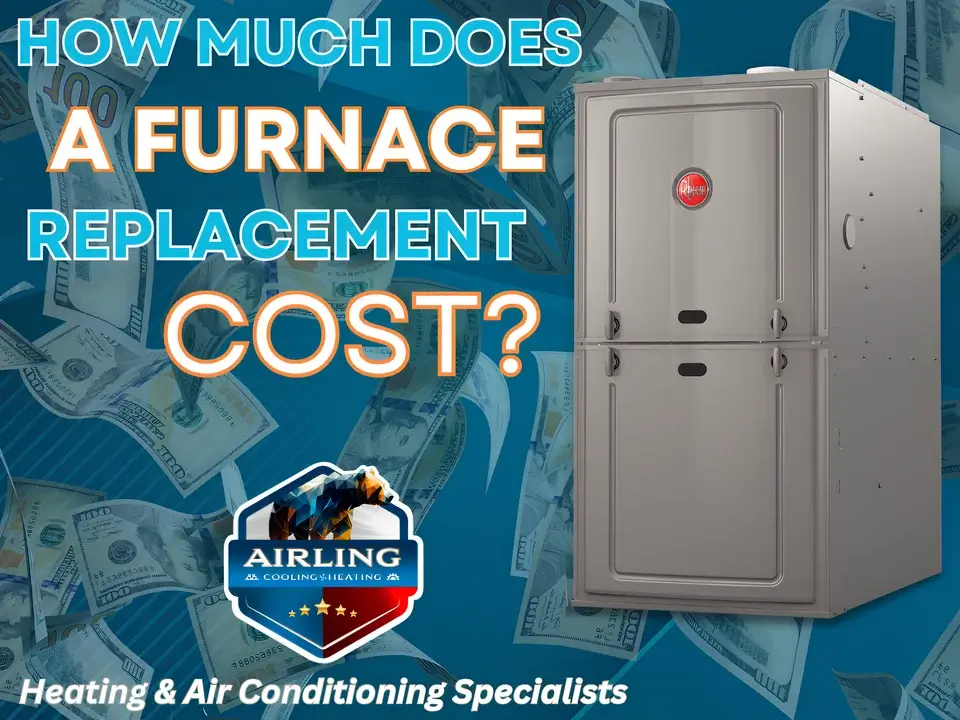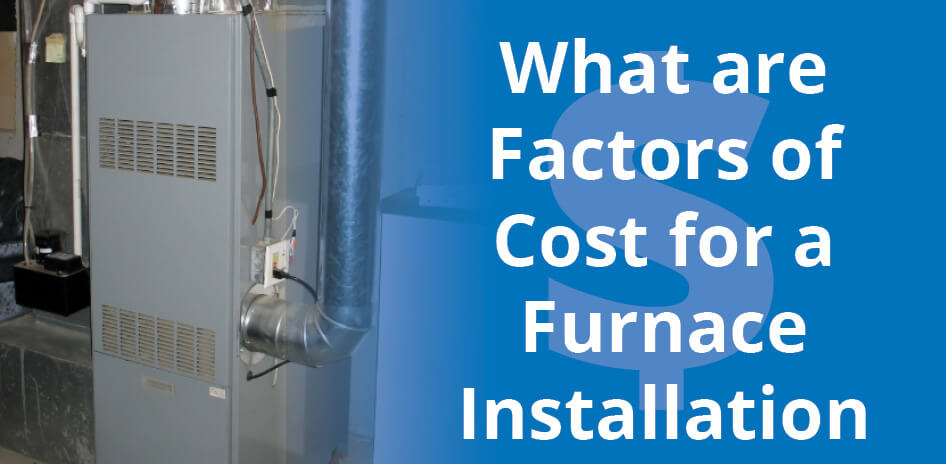How Much Does A Furnace Replacement Cost

Understanding Furnace Replacement Costs: A Comprehensive Guide
Replacing a furnace is a significant investment for any homeowner or business. Beyond the upfront cost, understanding the long-term benefits – energy savings, improved air quality, and increased property value – is crucial for making an informed decision. This article breaks down the factors influencing furnace replacement costs, explores energy-efficient options, and explains how smart technology integration can optimize your HVAC system for maximum savings and comfort.
Key Factors Influencing Furnace Replacement Cost
The cost of replacing a furnace isn't a one-size-fits-all number. Several factors contribute to the final price, including:
* Furnace Type: The most significant cost driver. Options range from standard efficiency single-stage furnaces to high-efficiency modulating furnaces. A standard efficiency furnace (around 80% AFUE - Annual Fuel Utilization Efficiency) will be less expensive upfront than a high-efficiency model (90% AFUE or higher). * Fuel Type: Natural gas furnaces are generally the most common and often the least expensive to operate, but propane or oil furnaces may be necessary depending on your location and existing infrastructure. Switching fuel types can dramatically increase the overall cost due to required modifications. * Furnace Size (BTU): The British Thermal Units (BTU) output determines the furnace's heating capacity. Selecting the correct size is crucial for efficiency and comfort. An undersized furnace won't adequately heat your space, while an oversized furnace will cycle on and off frequently, leading to wasted energy and uneven temperatures. Professional HVAC contractors use calculations based on your home's square footage, insulation, climate zone, and window efficiency to determine the appropriate BTU rating. * Efficiency Rating (AFUE): AFUE represents the percentage of fuel converted into usable heat. A higher AFUE rating means more efficient operation and lower energy bills. Furnaces with an Energy Star certification meet strict energy efficiency guidelines set by the EPA. * Installation Complexity: Easy access to the existing furnace location simplifies the installation process and reduces labor costs. Complex installations involving ductwork modifications, gas line extensions, or chimney liners will increase the overall price. * Ductwork Condition: Leaky or poorly insulated ductwork can negate the benefits of a new, high-efficiency furnace. Duct sealing or replacement may be necessary to maximize energy savings. * Labor Costs: Labor rates vary depending on your geographic location and the HVAC contractor's experience and expertise. Always obtain multiple quotes from licensed and insured contractors. * Permits and Inspections: Most municipalities require permits and inspections for furnace replacements to ensure code compliance and safety. These fees can add to the overall cost. * Brand Reputation and Warranty: Well-known brands often come with a higher price tag but may offer better reliability and longer warranties. Compare warranty terms and conditions carefully.Cost Breakdown: What to Expect
While specific costs vary based on the factors listed above, here's a general cost breakdown:
* Basic Furnace (80% AFUE): $2,000 - $4,000 (including installation) * Mid-Efficiency Furnace (80-90% AFUE): $3,000 - $5,500 (including installation) * High-Efficiency Furnace (90%+ AFUE): $4,500 - $8,000+ (including installation)These ranges are estimates and can fluctuate based on your specific circumstances. Always request detailed, itemized quotes from multiple HVAC contractors.
Maximizing Energy Savings with High-Efficiency Furnaces
Investing in a high-efficiency furnace can lead to significant long-term savings on your energy bills. While the upfront cost is higher, the reduced energy consumption can offset the difference over time. High-efficiency furnaces often feature:
* Modulating Burners: These burners adjust the heating output based on demand, providing consistent temperatures and preventing energy waste. * Variable-Speed Blowers: Variable-speed blowers circulate air more efficiently and quietly than single-speed blowers. * Sealed Combustion: Sealed combustion systems draw air from outside, preventing the loss of heated indoor air.To quantify the potential savings, consider this example: A homeowner replacing an old 60% AFUE furnace with a new 95% AFUE furnace could save up to 35% on their heating bills. Over the lifespan of the furnace (typically 15-20 years), these savings can easily exceed the initial cost difference.
Rebates and Incentives
Many utility companies, state governments, and federal programs offer rebates and incentives for installing energy-efficient furnaces. Check the Energy Star website and your local utility company's website for available rebates in your area. These rebates can significantly reduce the overall cost of furnace replacement and make high-efficiency models more affordable.
The Benefits of Smart HVAC Integration
Integrating your new furnace with smart home technology can further enhance energy savings and comfort. Consider these smart features:
* Smart Thermostats: Learn your heating patterns and automatically adjust the temperature to optimize energy consumption. Programmable features and remote access via smartphone allow for precise temperature control. Many smart thermostats offer geofencing capabilities, automatically adjusting the temperature when you leave or approach your home. * Smart Sensors: Monitor temperature and humidity levels in different rooms, allowing for zone-based heating and cooling. This prevents overheating or underheating specific areas of your home. * Energy Monitoring Systems: Track your energy consumption in real-time, providing valuable insights into your heating habits and identifying areas for improvement.By integrating these smart technologies, you can create a more comfortable and energy-efficient home while reducing your carbon footprint.
Choosing the Right HVAC Contractor
Selecting a qualified and reputable HVAC contractor is essential for a successful furnace replacement. Look for contractors who are:
* Licensed and Insured: Ensure the contractor is properly licensed and insured to protect yourself from liability. * Experienced: Choose a contractor with a proven track record of successful furnace installations. * Certified: Look for contractors with certifications from organizations like NATE (North American Technician Excellence). * Offer Multiple Quotes: Obtain at least three quotes from different contractors to compare prices and services. * Provide Written Estimates: Ensure the estimate includes a detailed breakdown of all costs, including equipment, labor, permits, and disposal fees. * Offer Warranties: Inquire about warranties on both the equipment and the installation labor. * Check References: Ask for references from previous customers and contact them to inquire about their experience.Signs You Need a Furnace Replacement
Knowing when to replace your furnace can save you money in the long run. Here are some telltale signs:
* Age: If your furnace is 15-20 years old or older, it's likely nearing the end of its lifespan. * Rising Energy Bills: A sudden increase in your heating bills could indicate a decline in furnace efficiency. * Frequent Repairs: If you're constantly repairing your furnace, it may be more cost-effective to replace it. * Uneven Heating: Inconsistent temperatures throughout your home suggest a problem with your furnace's performance. * Strange Noises: Unusual noises, such as banging, rattling, or whistling, could indicate a mechanical issue. * Yellow Flame: A yellow or flickering flame in a gas furnace indicates a potential carbon monoxide issue and requires immediate attention. Contact a qualified HVAC technician immediately.Conclusion
Furnace replacement is a significant investment that requires careful consideration. By understanding the factors influencing cost, exploring energy-efficient options, integrating smart technology, and choosing a reputable HVAC contractor, you can make an informed decision that will save you money, improve your comfort, and enhance the value of your home. Don't delay—take the first step towards a warmer and more efficient future today.










